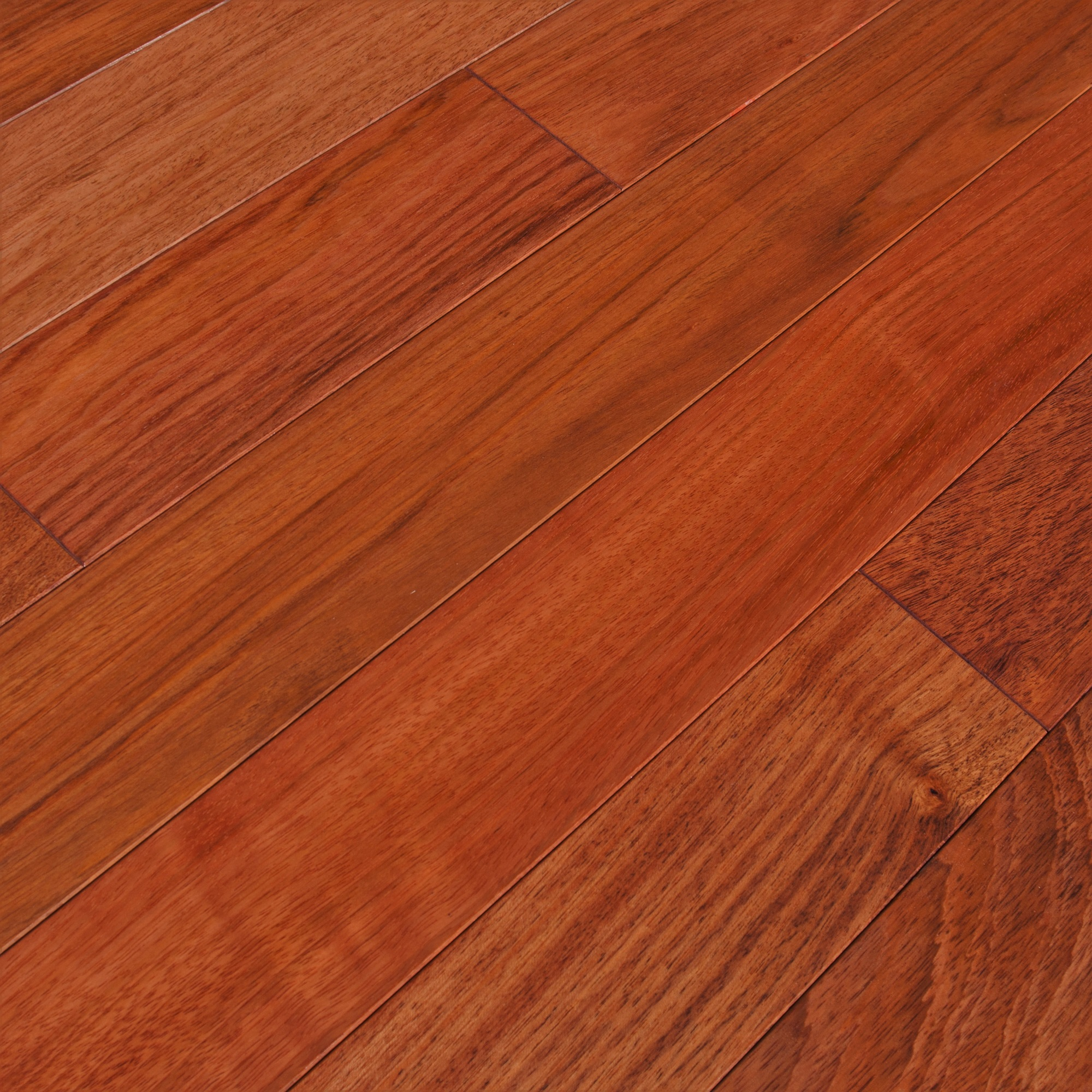Jatoba hardwood flooring, commonly known as Brazilian Cherry, has become one of the most popular exotic wood flooring choices on the market. The rich color and strength of this wood species deliver superior performance for both residential and commercial applications. Are you looking for a high-end finish in your living space? Jatoba Brazilian Cherry hardwood flooring presents a fantastic choice.
Essential Properties of Brazilian Cherry Hardwood
- Appearance – Jatoba has a deep tone, ranging from golden to rusty brown, much like mahogany. The texture looks coarse to medium and presents an interwoven grain. Full-color runs throughout the wood, which helps to minimize the appearance of wear and damage.
- Durability – Brazilian Cherry has a high Janka rating, coming in at around 2350, compared to American Cherry at 950. Jatoba has a reputation for resistance to termites and other critters, providing a lengthy potential lifespan. It’s also simple to deal with, making it a popular choice for flooring installers, as well as homeowners. Jatoba is known for stain resistance, therefore, the natural color is often preferred.
- Affordability – known as a luxurious option, Jatoba does cost more than common domestic options. However, you can expect years of beauty and performance in any application. Installation remains the same, so labor costs should be in line with all other types of hardwood flooring.
Where Does Brazilian Cherry Wood Flooring Come From?
Despite its appearance and name, Brazilian Cherry is not a true cherry wood. Most manufacturers label Jatoba wood flooring as Brazilian Cherry for marketing purposes, as it sounds more luxurious and upscale. You may also see it on the shelf as Locust or Courbaril.
Tree Stats: height of between 80 to 150 feet, a diameter of approximately 4 feet, and a well-formed trunk.
Originating from a tree in the Leguminosae family, quality Jatoba flooring should be sourced by a responsible manufacturer with FSC certification. This wood flooring comes mainly from Brazil, although some product is sourced from Peru, Bolivia, and southern Mexico. The tree is considered endangered and FSC certification provides consumers with assurance of sustainable and responsible harvesting practices.
Uses and Product Details
Brazilian Cherry wood flooring looks attractive in nearly any room, although the dark, rich color may be overwhelming in a smaller space. Be sure to design hallways and foyers with window treatments that enhance natural light, allowing for the use of Jatoba.
Solid Brazilian Cherry works well in the kitchen, due to the wood’s stain resistance and strength. Several manufacturers offer floating Brazilian Cherry wood floors, ideal for the dining room, family room, bedroom, and home office. Nail-down hardwood and glue-down hardwood flooring lines are also available in Brazilian Cherry.
When you’re on the market for long-lasting, highly attractive, and durable hardwood flooring, Jatoba or Brazilian Cherry wood floors offer a wise option. Appreciate the rich color and interwoven grain that presents an exotic look. Count on the strength of a substantial Janka hardness rating, and invest in Jatoba—a wood flooring option that’s both trendy and classic in one package.
